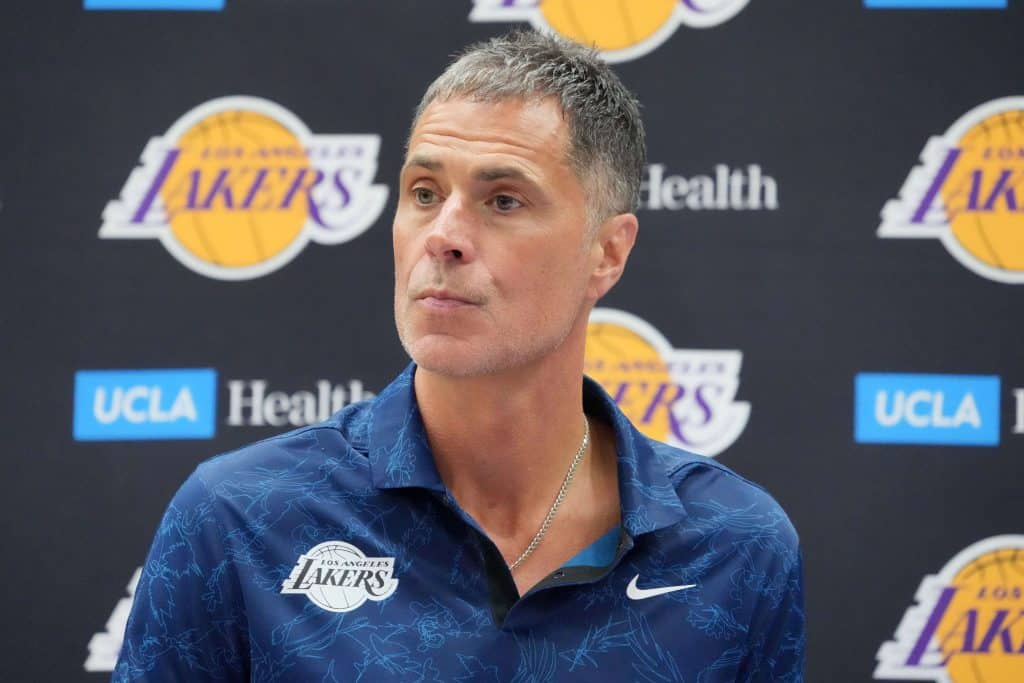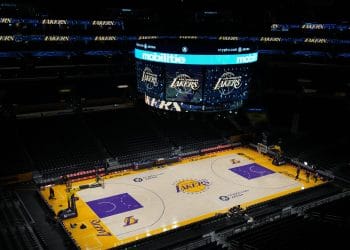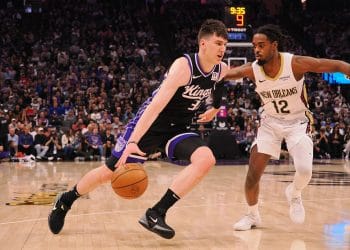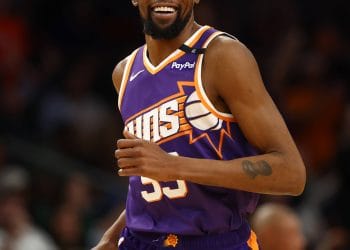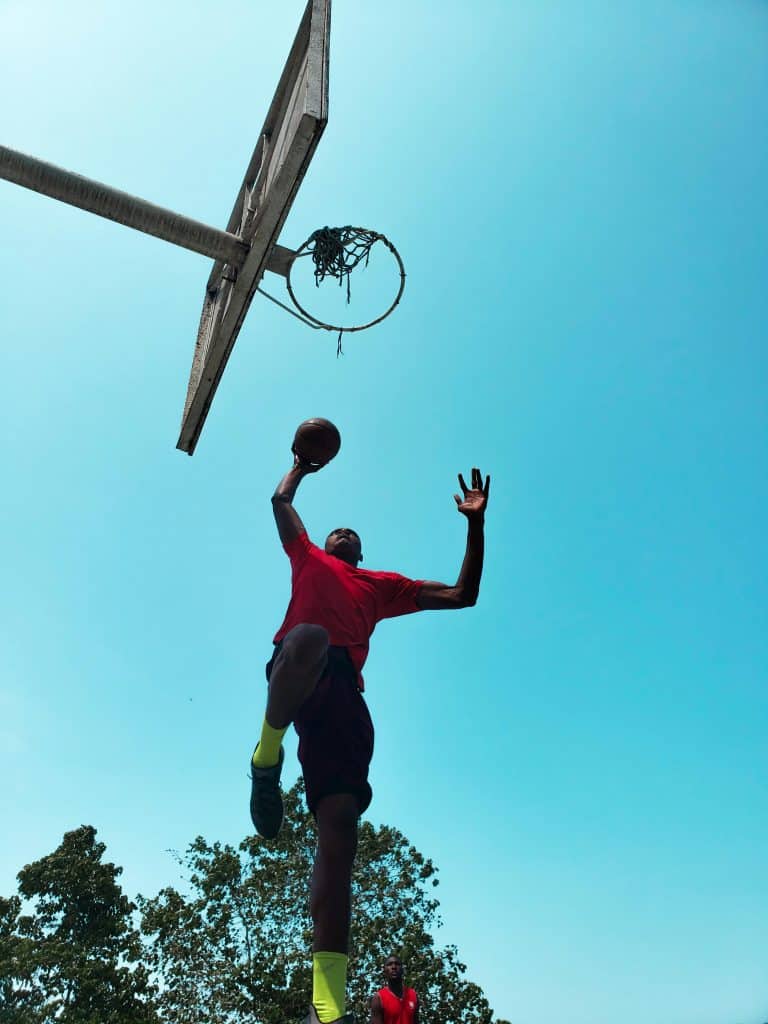Table of Contents
ToggleTop 5 Lakers Roster Mistakes by Rob Pelinka That Still Haunt L.A.
Since Rob Pelinka took over as Lakers GM, there have been some highs — the 2020 bubble title, for one — but the lows are piling up fast. From head-scratching trades to letting key role players walk, Pelinka’s front office decisions have drawn more side-eyes than praise.
Whether it’s chasing big names over fit or failing to build a balanced roster around LeBron and AD, the mistakes are starting to define his legacy more than the wins.
Now, with Luka Dončić locked in as the new franchise centerpiece, Pelinka is trying to juggle a win-now window with LeBron and a long-term rebuild — and fans aren’t buying it.
On Day 1 of free agency, the Lakers struck out on both Brook Lopez (who joined the rival Clippers) and Clint Capela, failing to fill their biggest need at center.
Here are the Top 5 Lakers roster mistakes by Rob Pelinka that still have fans shaking their heads.
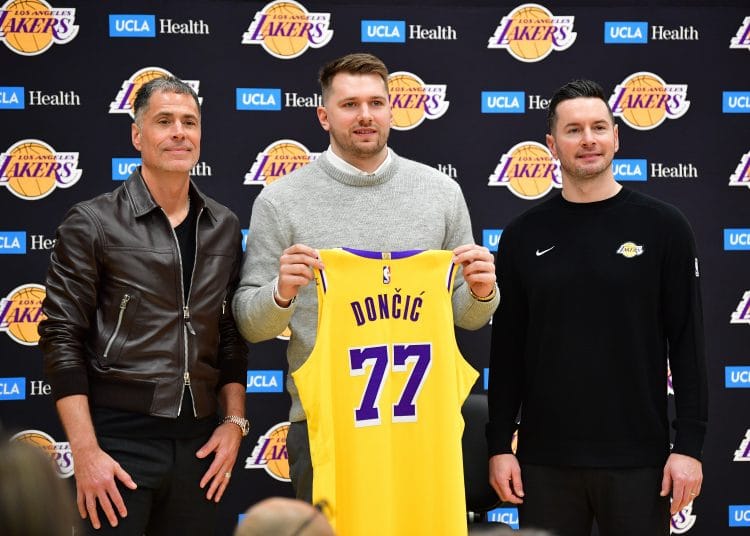
5. Swinging and Missing on Role Players — Over and Over
While Pelinka’s big-name mistakes grab headlines, his track record with bench pieces and mid-tier signings has quietly been just as damaging. Year after year, the Lakers have used valuable roster spots on players who either didn’t fit, couldn’t stay healthy, or flat-out didn’t produce.
The list is long: Gabe Vincent (injured, ineffective), Kendrick Nunn (never clicked in L.A.), Mo Bamba (bounced around the rotation), Trevor Ariza, Avery Bradley — none made a real impact. These were all chances to solidify the bench and surround LeBron and AD with shooting, defense, or upside. None delivered.
Worse? The Lakers had talent in the building they let walk. Malik Beasley turned into a 16 PPG scorer and finished 2nd in Sixth Man of the Year voting in Detroit. Scotty Pippen Jr. developed into one of the best backup point guards in the league — just not in purple and gold.
Result: Pelinka didn’t just sign the wrong players — he failed to recognize the right ones. And in a league where depth wins titles, that’s a mistake the Lakers keep paying for.
4. From Brook Lopez to Jake LaRavia — The Lakers’ Free Agency Priorities Make No Sense
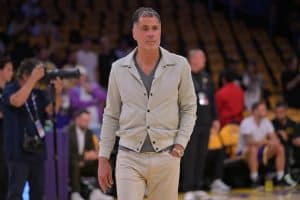
Free agency is where great GMs build depth, fill gaps, and plug holes without mortgaging the future. But under Rob Pelinka, the Lakers have made a habit of watching valuable role players sign elsewhere — while hoping minimum-deal gambles will save the day.
It happened again on Day 1 of 2025 free agency, when the Lakers missed out on Brook Lopez and Clint Capela — two veteran centers who perfectly matched their offseason needs. Instead, Pelinka’s first signing was Jake LaRavia, a 23-year-old forward who split last season between Memphis and Sacramento, averaging 6.8 points and 3.9 rebounds across 66 games. While efficient, LaRavia wasn’t a clear roster upgrade, and Lakers fans wasted no time calling out the move online.
This is nothing new. Pelinka let Malik Monk walk after a breakout year, lost Alex Caruso, Dwight Howard, and JaVale McGee, and passed over dependable low-cost bigs like Isaiah Hartenstein and Bismack Biyombo in favor of players who never stuck.
Result: The Lakers keep entering the season with glaring roster holes — especially at center — and Pelinka’s free agency decisions continue to leave fans frustrated and skeptical.
3. Blowing Up the 2020 Championship Roster
After winning it all in the bubble, most teams would run it back. Not Pelinka. He let go of key veterans like Dwight Howard, Rajon Rondo, JaVale McGee, and Danny Green — guys who played critical roles in the title run.
Instead of continuity, the Lakers brought in new names who didn’t fit: Dennis Schröder, Montrezl Harrell, and Marc Gasol — all talented, but none with the same defensive edge or locker room presence. The identity that made the 2020 squad elite? Gone.
The team never found its rhythm again. Chemistry dipped. Defense dropped. Injuries piled up. And just like that, the window slammed shut.
Result: The Lakers got worse immediately. The magic from 2020 was gone, and Pelinka spent the next three years scrambling to rebuild something he already had.
2. Trading for Russell Westbrook in 2021

This is the one that broke the locker room and the fanbase. In the summer of 2021, Rob Pelinka sent Kyle Kuzma, Kentavious Caldwell-Pope, Montrezl Harrell, and a first-round pick to Washington for Russell Westbrook — a superstar name with a high usage rate and a low fit next to LeBron and AD.
From day one, the fit was brutal. Westbrook needed the ball in his hands, but so did LeBron.
The offense had no flow, and opposing defenses collapsed the paint, daring Russ to shoot. He responded by clanking threes at 29.8% and turning the ball over at a high clip.
The team’s floor spacing vanished, the defense collapsed, and the Lakers quickly lost their identity.
Worse than the fit? The fallout. That trade completely depleted their depth. Kuzma was a versatile scorer and rebounder. Harrell brought energy off the bench. And KCP was a two-way staple — one of the most reliable role players from the 2020 championship team.
He eventually landed in Denver, where he helped the Nuggets win the 2023 NBA title by doing exactly what the Lakers needed: defending wings and hitting timely threes.
The Lakers, meanwhile, spent the next two seasons trying to patch holes, rotating through minimum-contract veterans who never stuck. They’ve never fully recovered their depth or defensive balance since that move.
To make it even worse, the Lakers reportedly passed on a more logical deal for Buddy Hield and Myles Turner — a trade that would’ve addressed their shooting and size without sacrificing team chemistry.
Result: The Lakers missed the playoffs, lost their core, and are still rebuilding the depth chart they gave away in one swing for Russ.
1. Letting Alex Caruso Walk in 2021
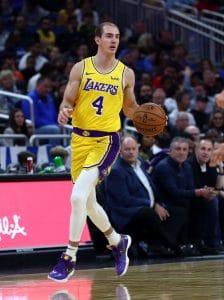
The Lakers let one of their toughest perimeter defenders walk over a few million dollars — and chose to pay Talen Horton-Tucker instead. Bad move then. Worse now.
Alex Caruso became an All-Defensive guard in Chicago, exactly the kind of gritty, unselfish player that fits perfectly next to LeBron. He brought defense, chemistry, and effort — all things the Lakers lacked after their 2020 title run.
But it didn’t stop there. Caruso was later traded to OKC, where he helped lead a young Thunder team to a 2025 NBA championship.
In the playoffs, he dropped three 20-point games — two of them in the NBA Finals — and was a defensive menace the whole way.
Result: The Lakers lost a fan favorite and defensive anchor, while THT flamed out in L.A. with little return. This one still stings.
Think Rob Pelinka deserves more credit — or even less?
Check out our ranking of the Top 10 NBA GMs of All Time here to see how the real legends built lasting success.
Who is Rob Pelinka?
Rob Pelinka is the Vice President of Basketball Operations and General Manager for the Los Angeles Lakers. Before joining the Lakers, he spent nearly 20 years as a top NBA agent and ran The Landmark Sports Agency, where he represented stars like Kobe Bryant, James Harden, and Andre Iguodala. Pelinka now oversees roster decisions, trades, drafts, and free agency for the Lakers.
When did Rob Pelinka become Lakers GM?
Rob Pelinka was named General Manager of the Lakers on March 7, 2017, working initially alongside team president Magic Johnson.
How long has Rob Pelinka been with the Lakers?
As of 2025, Rob Pelinka has been with the Lakers for 8 years, having joined the front office in 2017.
How tall is Rob Pelinka?
Rob Pelinka is approximately 6 feet 6 inches (1.98 meters) tall.
Did Rob Pelinka play basketball?
Yes. Rob Pelinka played college basketball at the University of Michigan from 1989 to 1993. He was a role player and part of the “Fab Five” era, known for being a sharpshooter and strong student-athlete.


